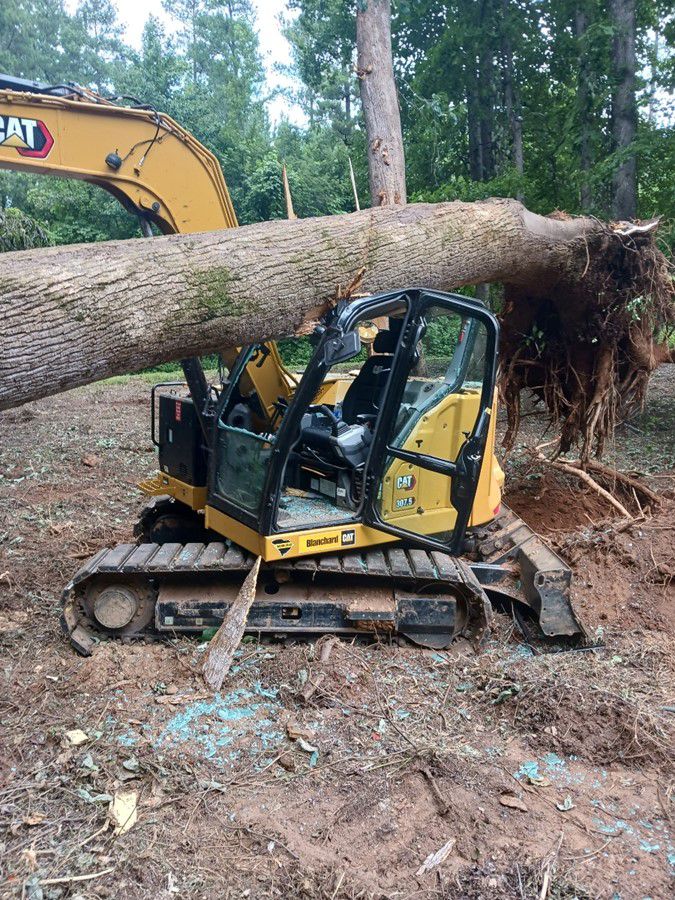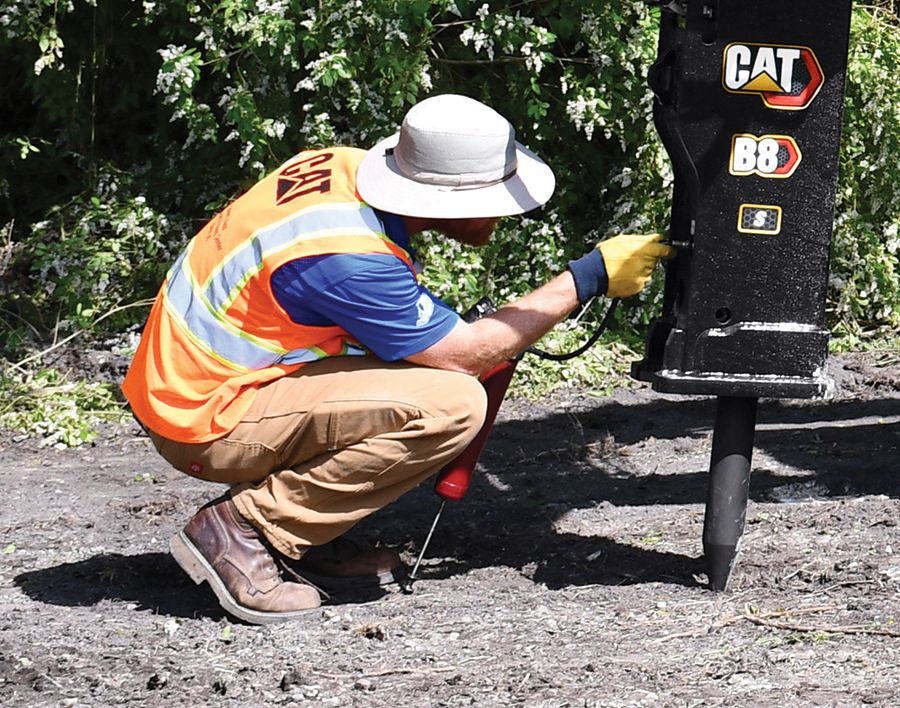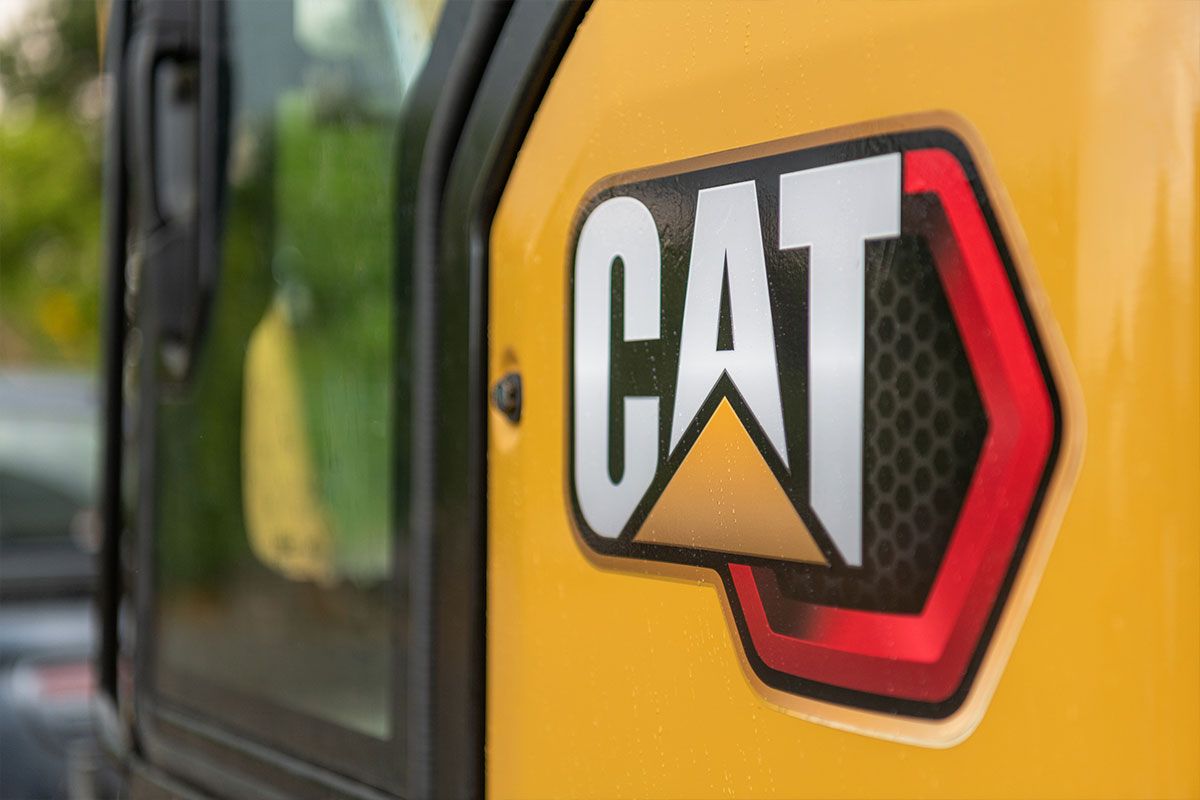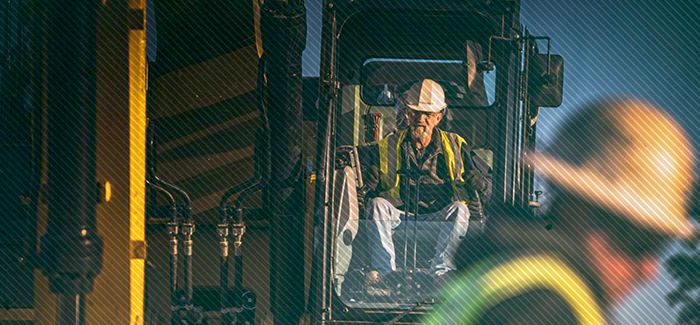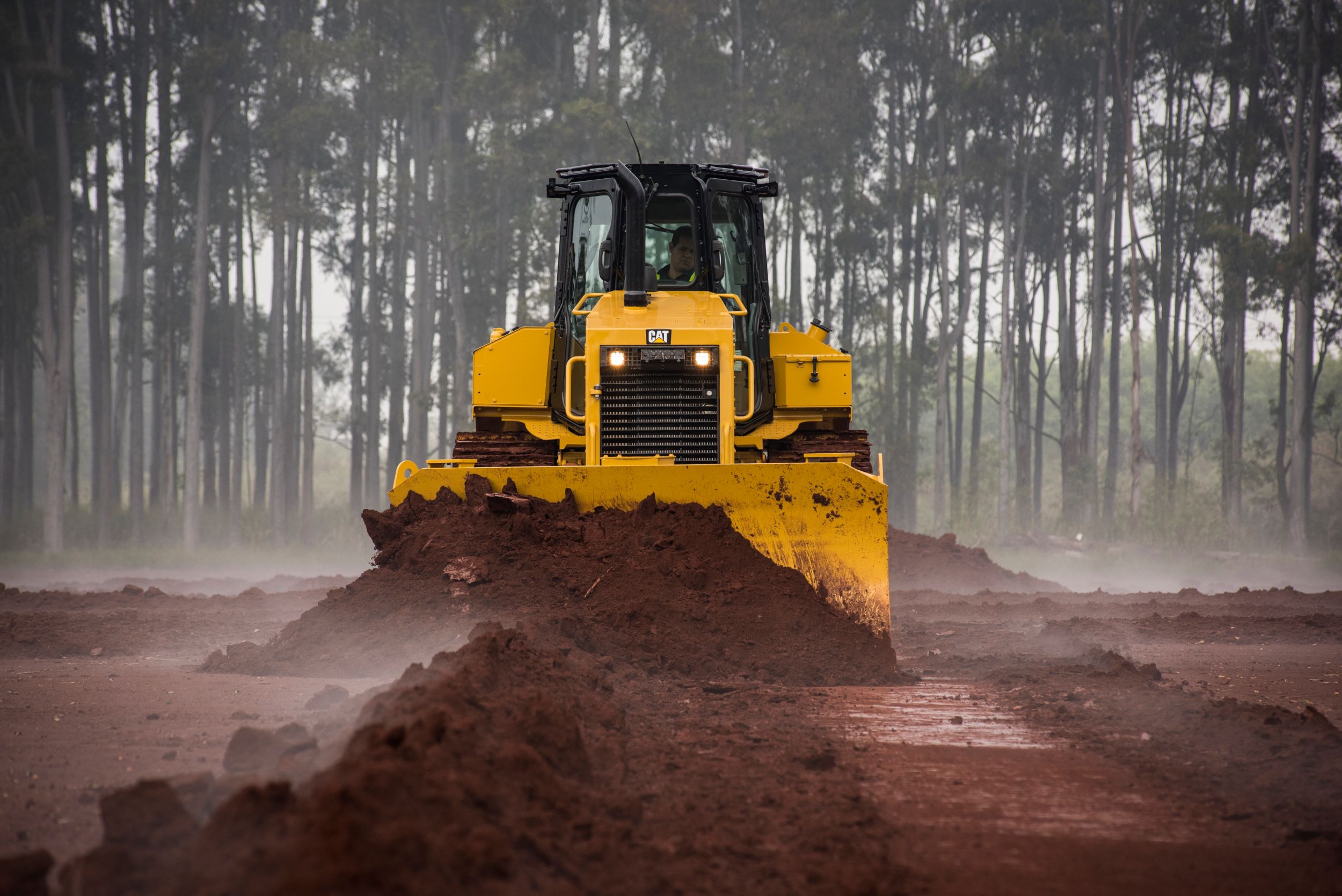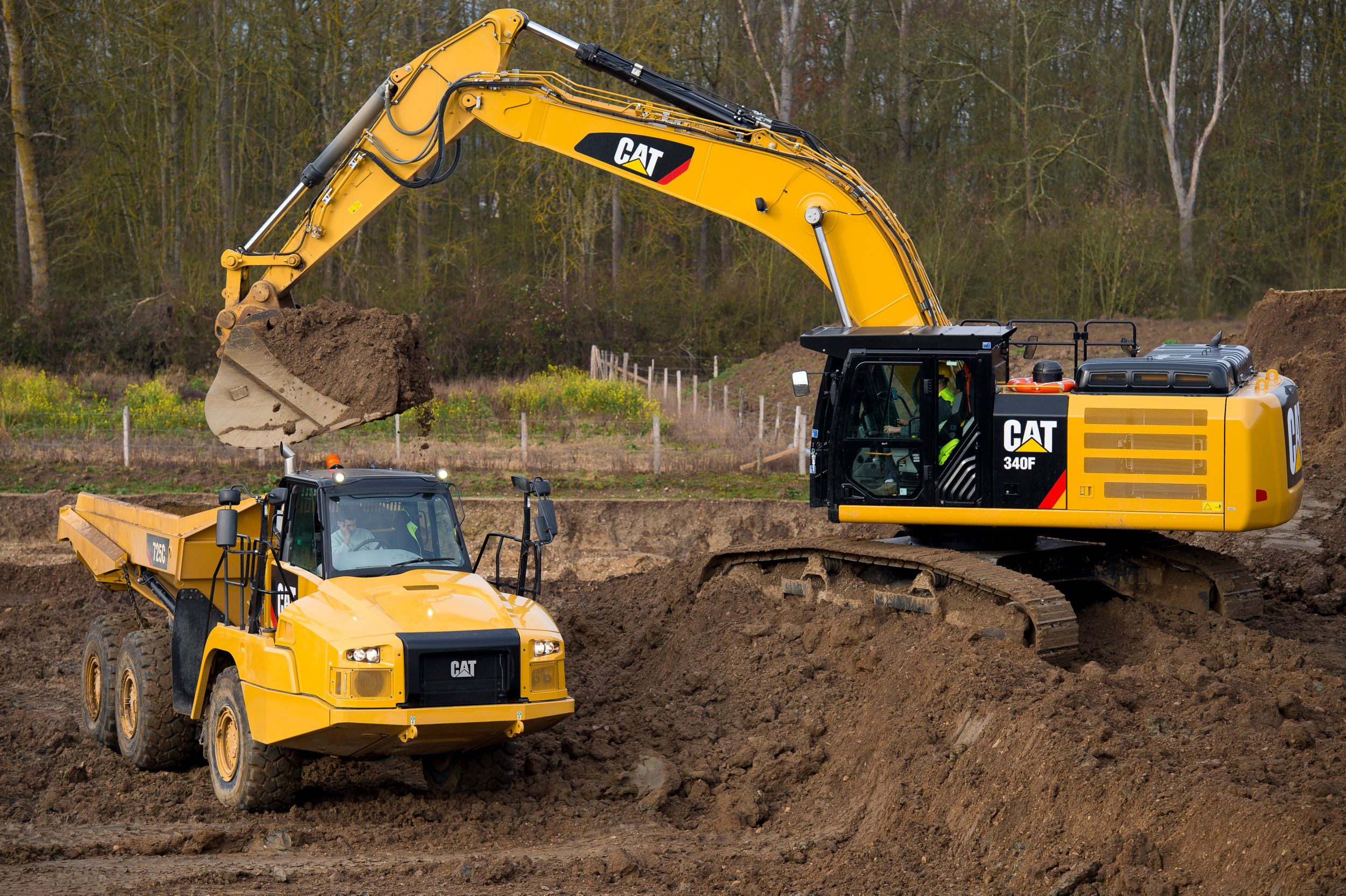

Sign In
Welcome! Sign In to personalize your Cat.com experience
If you already have an existing account with another Cat App, you can use the same account to sign in here
Register Now
One Account. All of Cat.
Your Caterpillar account is the single account you use to log in to select services and applications we offer. Shop for parts and machines online, manage your fleet, go mobile, and more.
Account Information
Site Settings
Security
Your Guide to Cat® Mini Excavator Hammers
Get to know the Cat® hydraulic hammer lineup before choosing your tool.
Caitlin Maddock-Bahr | Social Media & Digital Strategy Manager
Smashing rock and prepping sites might seem like a ‘one-tool-fits-all’ job, but there’s a wide range of Cat® hydraulic hammers.
A Cat mini excavator hammer can make your machine even more effective at demolition and construction. Choosing the right hydraulic hammer and knowing how to properly use it will boost your investment. We chatted with Caterpillar Product Specialist Brock Bahr to get a comprehensive guide to Cat hydraulic hammers.
Know the difference between Cat mini excavator hammers.
For Cat mini excavators, the two categories of hammers are the Cat B Series hammers and the Cat H Series hammers. Both excavator attachments are used for demolition applications, such as breaking concrete, pavement, roads and masonry. They‘re also used for landscaping, site prep and breaking frozen ground for utility repairs.
However, there are differences between the two categories.
“Cat H Series hammers offer a wider range of versatility with features such as auto shutoff and optional auto-lube,” Brock says.
Auto shutoff is a safety feature that prevents blank firing, which is the top cause of user-induced damage to hammers. There’s an underwater kit available for H Series hammers if you’re working around a dam or pylons in water.
An H Series hammer is for serious hammer usage.
“H Series hammers are good for quarry applications,” Brock explains. “They’re ideal when you’re doing demolition, day in and day out. They’re not for situations where you just need a hammer for a couple of hours on a job.”
An added benefit of a Cat H Series hammer is the reduced noise output. Both the B and H Series are designed for reduced noise output, but the power cell in an H Series hammer is rubber-insulated to reduce the decibel level. They have a fully cast housing which also helps reduce noise.
Cat B Series hammers are a high-quality option that can help you save on costs. Cat H Series hammers could save you more in the long run, depending on your scope of use. A quick chat with your Cat dealer can help you determine which hammer is best for your operation.
What do the numbers mean?
If you’re shopping for hammers on Cat.com, you’ll notice there’s a number listed for each. That number corresponds to the mini excavator it’s intended for. For example, the B8 hammer is intended for an 8-ton machine, the Cat 308 mini excavator. There’s a range of hammer types that can be used with different Cat mini excavators, but it is recommended that you speak with your Cat dealer to ensure compatibility.
Mounting brackets can make hammers more versatile.
If you have more than one machine on a job, such as a mini excavator and a skid steer, it might make sense to invest in a combination hammer mounting bracket. This tool allows you to switch your hammer back and forth easily between two machines without having to unbolt top brackets and hoses. The mounting bracket allows your crew to keep working on concrete demo when you need the mini excavator to accomplish a different task. The mounting bracket is only available for 3- to 6-ton excavators.
Practice proper hydraulic hammer maintenance.
If you’re using a hydraulic hammer to break concrete, you don’t want to spend too much time striking one specific spot. Heat can build up and cause damage after more than 15 seconds or so. Also, dust from broken concrete can create a cushion on the tip of the hammer, making it less effective. When you hit a stubborn location, try moving to a different spot.
Angles matter. Always be sure your hammer is positioned perpendicular to what you’re hammering, not at an angle. When using a mini excavator to hammer, make sure the boom and stick are not fully extended. This would put too much force through the cylinders. Over time, the additional stress and strain will reduce the life of the machine.
Grease your hammer every four hours or, at a minimum, twice a day. It’s recommended you use Cat hammer paste because it contains copper and graphite and won’t break down due to its higher temperature rating.
An important topic when it comes to hammering is prying. After breaking a piece of rock, operators will often use the tool end of the hammer to pry materials away. Brock says this should not be done.
“Everyone does this, but they shouldn’t,” Brock emphasizes. “It’s a hammer, not a broom.”
Using the end of the hammer to clear a path through stone will put unnecessary wear on the tool.
Cat hammers can help you make easy work of demolition. If you want to know which Cat hydraulic hammers are right for your operation, reach out to your local Cat dealer today.



CAITLIN MADDOCK-BAHR
Social Media & Digital Strategy Manager
Caitlin Maddock-Bahr exercises her storytelling expertise as a social media and digital strategy manager. In this role, she not only helps Caterpillar connect with their audience, but helps customers connect with the brand.
RELATED ARTICLES
You’re here to get ideas to grow your business. Read on for machine insights and expert tips and tricks to get more out of every job.
-
Better Bids In Five Steps
Whether you’re putting together your first bid or your 500th, here are a few strategies you can follow that will make the process easier.
Learn More -
Rolling Resistance Factors
You can use rolling resistance factors to help you identify which equipment will be most efficient on your worksite.
Learn More -
How to Measure Loose Density in the Field
Material Density determines bucket and machine choices. Construction companies often select the size of machine they believe is required and equip it with a standard bucket, but this approach might short change productivity.
Learn More -
Swell & Void Percentage, Load Factors
Learn about Swell and Void Percentages, load factors and how they can affect your fuel efficiency.
Learn More

